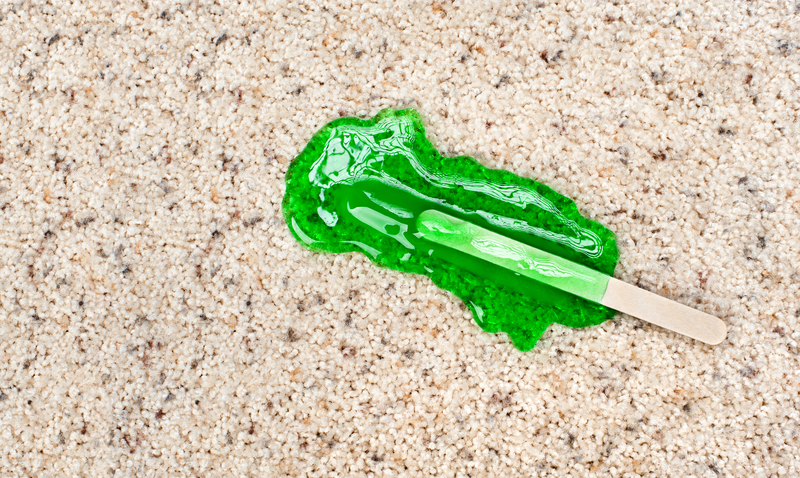Dust mites are microscopic creatures that thrive in warm, humid environments and feed primarily on the dead skin cells shed by humans and pets. These minuscule pests are a common allergen and can contribute to allergic reactions and asthma. Given their prevalence and the health issues they can cause, eliminating dust mites from your living environment is crucial. This article offers a comprehensive three-step guide for effectively reducing and managing dust mites in your home.
Step 1: Identification and Assessment
Understanding Dust Mite Habitats
Dust mites are most commonly found in areas where dead skin cells accumulate. These include bedding, upholstered furniture, and carpets. To effectively combat dust mites, it's essential to identify their primary habitats and assess the extent of the infestation.
Signs of Dust Mite Infestations
Since dust mites are invisible to the naked eye, recognizing an infestation depends on identifying signs of their presence. Common indicators include increased allergy symptoms, such as sneezing, runny nose, itchy eyes, and worsening asthma conditions. If you notice these symptoms intensifying after a specific activity, like vacuuming or dusting, it might suggest a high concentration of dust mites in those areas.
Measuring Dust Mite Allergen Levels
Several tools and tests can help measure dust mite allergen levels in your home. Allergen test kits, available online or in stores, can provide an estimate of dust mite populations by analyzing dust samples. Professional indoor air quality assessments can also offer more precise measurements and recommendations for mitigation.

Step 2: Reduction and Control Measures
Cleaning and Hygiene Practices
Effective cleaning is essential for reducing dust mites. Regular vacuuming with a high-efficiency particulate air (HEPA) filter vacuum cleaner can significantly cut down dust mite populations. For optimal results, vacuum carpets, rugs, and upholstery at least twice a week.
Laundering Bedding
Bedding should be washed in hot water (at least 130?F or 54?C) weekly. High temperatures are necessary to kill dust mites and remove allergens. If hot water washing is not feasible, using allergen-proof bed covers can prevent dust mites from infiltrating mattresses and pillows.
Humidity Control
Dust mites thrive in humid conditions, typically those over 50% relative humidity. Using a dehumidifier can effectively reduce indoor humidity levels, creating an environment less conducive to dust mite survival. Aim to maintain indoor humidity between 30-50%.
Proper Ventilation
In addition to using dehumidifiers, ensuring proper home ventilation is crucial. Regularly open windows to allow air circulation and consider using exhaust fans in bathrooms and kitchens to reduce moisture levels.
Using Anti-Allergen Treatments
There are various commercial anti-allergen sprays and treatments available that can minimize dust mite allergens. These products can be applied to carpets, upholstery, and bedding to neutralize the proteins that cause allergic reactions.
Step 3: Long-Term Prevention
Choosing the Right Furnishings
Opt for dust-mite-resistant materials when selecting home furnishings. Leather or vinyl furniture is easier to clean and less hospitable to dust mites compared to fabric-covered options. Use washable rugs instead of wall-to-wall carpets to make regular cleaning more manageable.
Encased Bedding
Investing in allergen-proof mattress and pillow encasements can significantly reduce dust mite presence. These encasements create barriers that prevent dust mites from penetrating bedding materials.
Routine Cleaning Schedule
Maintaining a routine cleaning schedule is essential for long-term dust mite control. In addition to frequent vacuuming and washing bedding, consider implementing a schedule for cleaning items that are often overlooked, such as curtains, stuffed animals, and pet beds.
Minor Home Repairs
Address any issues that encourage moisture accumulation in your home, like leaking pipes, poor insulation, or inadequate water drainage systems. Keeping your home dry is a vital part of long-term dust mite prevention.
Professional Help
In cases of severe dust mite infestations, seeking professional help might be necessary. Pest control services specializing in allergens can offer advanced solutions, such as steam cleaning and professional-grade anti-allergen treatments, to effectively reduce dust mite populations.
Step 4: Monitoring and Maintenance
Regular Allergen Testing
Routine allergen testing can help monitor the effectiveness of your dust mite control efforts. Using allergen test kits periodically can confirm that dust mite levels remain low, allowing you to make adjustments if necessary.
Maintenance of Cleaning Tools
Ensure that your cleaning tools, especially vacuum cleaners, are well-maintained. Replace HEPA filters regularly and check that all parts are functional to maximize their efficiency in capturing dust mites and other allergens.

Conclusion
Eliminating dust mites requires a holistic approach involving identification, reduction, and long-term prevention strategies. Regular cleaning, proper humidity control, and smart home furnishing choices are essential steps in creating a healthier living environment. By implementing the practices outlined in this guide, you can effectively reduce dust mite populations and mitigate their impact on your health and well-being.
Additional Resources
To further aid in your battle against dust mites, consider exploring additional resources and professional services. Many organizations and companies specialize in indoor air quality and allergen control, offering products and services tailored to your needs. Staying informed and proactive is the key to maintaining a dust-free home environment.
Remember, the consistent application of these strategies will not only help eliminate dust mites but will also contribute to a cleaner, healthier, and more comfortable living space for you and your loved ones.



